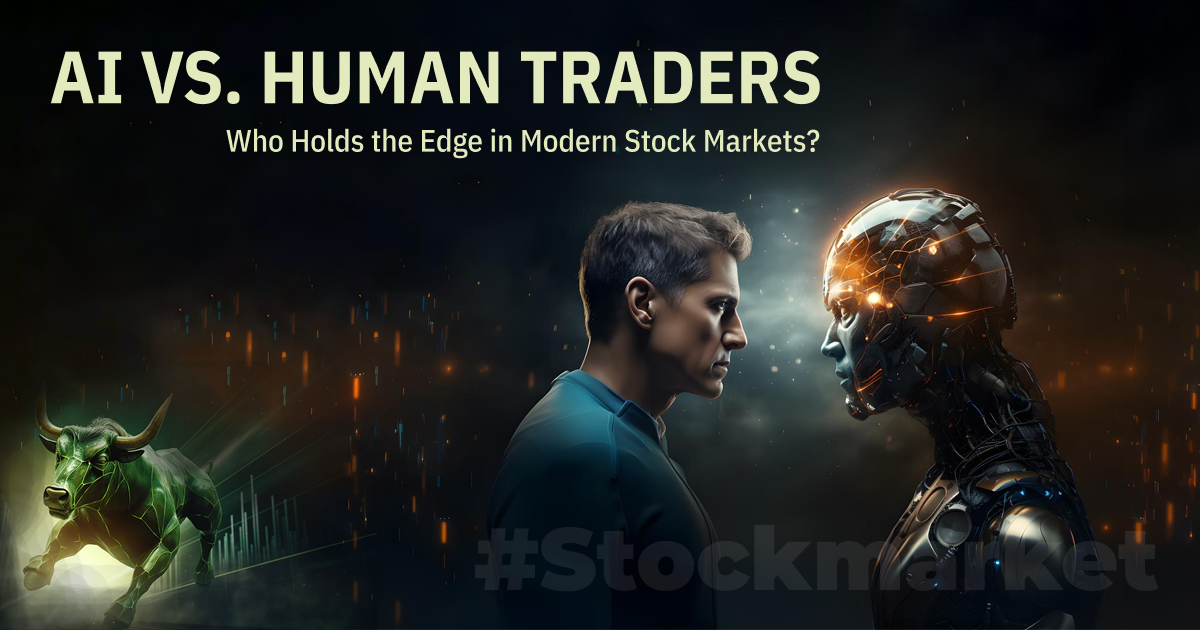Finance is evolving at an unprecedented pace, and much of this change is driven by technology — particularly artificial intelligence (AI). AI is resha
Finance is evolving at an unprecedented pace, and much of this change is driven by technology — particularly artificial intelligence (AI). AI is reshaping how trades are analyzed, executed, and managed.
Yet, human traders remain crucial, providing intuition, emotional intelligence, and experience. The big question for 2026: Will human traders be replaced by AI, or will a hybrid approach define the future of financial markets?
The Rise of AI Trading
Financial giants like Goldman Sachs and JP Morgan are leveraging AI trading to optimize portfolios, forecast market volatility, and minimize bias. Machine learning algorithms can process millions of data points per second — far beyond human capacity — to identify hidden patterns and opportunities.
In high-frequency trading, speed is everything. AI reacts instantly to market signals, converting volatility into profit. Platforms like Intellectia.ai bridge human judgment with AI precision, enabling traders to interpret global signals, manage risk, and spot opportunities faster and more accurately than ever before.
The Human Touch in Trading
While AI excels at speed and precision, humans bring intuition, flexibility, and emotional awareness. Markets are not purely data-driven; they are influenced by psychology, world events, and unpredictable human behavior.
In crises, such as geopolitical conflicts or natural disasters, human traders can make nuanced decisions that AI may miss, particularly when historical data does not match the current scenario.
AI vs. Human Traders: Key Differences
| Feature | AI Traders | Human Traders |
| Speed | Executes thousands of trades per second | Limited by reaction time |
| Accuracy | Data-driven, emotionless | Subject to fatigue or bias |
| Adaptability | Struggles with unseen events | Can improvise in chaos |
| Insight | Finds correlations | Understands causation & sentiment |
Challenges of AI Trading
AI is not infallible. Poor-quality data can lead to bad decisions. Many systems operate as black boxes, creating transparency issues and eroding trust.
AI cannot feel market sentiment, so it may trigger flash crashes or respond poorly to panic-driven events. This highlights the need for human oversight to maintain balance, consistency, and ethical decision-making.
The Hybrid Future of Trading
The most successful traders in 2026 will combine AI and human expertise:
- AI analyzes global markets, risk trends, and sentiment in real-time.
- Humans interpret results, develop strategies, and apply judgment.
- Together, they achieve faster, more accurate, and less biased trading.
Platforms like Intellectia.ai exemplify this hybrid model, blending AI insights with human strategy to create intelligent trading systems.
Handling Market Volatility
AI can react to volatile markets faster than humans, processing massive datasets instantly. However, humans can contextualize volatility, recognizing when short-term panic is not indicative of a fundamental problem.
The optimal approach combines AI’s speed with human judgment for robust, informed decision-making.
Ethical and Regulatory Challenges
As AI takes a larger role in trading, ethical and regulatory questions arise:
- Can AI trade responsibly on its own?
- Who bears the consequences of AI errors?
- Could AI manipulate markets unintentionally?
These challenges reinforce the importance of human oversight in AI-assisted trading.
Conclusion: Collaboration, Not Competition
The future of trading isn’t about AI replacing humans — it’s about collaboration. By 2026, the most successful traders will integrate AI trading with human creativity, judgment, and ethics.
AI handles:
- Data analysis
- Risk management
- Trade execution
Humans focus on:
- Strategy development
- Market interpretation
- Long-term vision
The financial markets of 2026 will favor those who can harness both human and artificial intelligence. Platforms like Intellectia.ai are leading the charge, enhancing human insight with AI-driven analytics.


COMMENTS